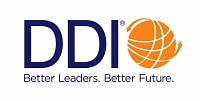Estimated reading time: 6 minutes
(Editor’s Note: Today’s article is brought to you by our friends at DDI, a global leadership firm that helps organizations hire, promote, and develop exceptional leaders. They were recently named to the Forbes America’s Best Employers 2024 list. Congrats to them and enjoy the read!)
A couple of months ago, I published an article on “10 Work Skills Every Manager Should Have Today”. If you haven’t already seen it, I hope you’ll check it out. A reader asked a great question in the comments asking for ways HR professionals can encourage learning.
It got me thinking. How can organizational leaders encourage employee learning? Since we’ve been chatting with our friends at DDI about leadership, I asked if they would share their knowledge with us. Verity Creedy is DDI’s vice president of product management. In her role, she has partnered with organizations to develop leaders and she has a special passion for the growth of frontline leaders.
Verity, thanks for being here. Let’s talk about learning. But I want to start at the organizational level. Why should organizations want to create learning cultures?
[Creedy] There is a clear business case for the return on investment (ROI) from learning. DDI’s Global Leadership Forecast 2023 data shows that companies offering effective leadership development at all levels are 2.7x more likely to be a top financial performer in their industry.
Additionally, we know that organizations that have a strong culture of development also enjoy more open feedback among colleagues, and higher rates of employee satisfaction as they feel a sense of growth in their company.
I’d like to think the first step in creating a learning culture is being a self-driven learner. How can leaders be role models when it comes to learning?
[Creedy] Leaders play a critical role in encouraging employees to be self-driven learners. For example:
- Do leaders reference their improvement areas and how they are striving to close gaps?
- Do leaders model reserving and protecting time for their own development?
- Do leaders debrief recent learning activities and share information and points of value they gained during the development?
While self-driven learning is important, there are still times when leaders need to encourage others to learn something new. Can you share 2-3 things that leaders can do to encourage others to learn?
[Creedy] Leaders must support their employees as they complete learning. It’s one of the biggest drivers of longer lasting behavior change. This support should come before, during, and after their team member’s development activities. For example:
Before: How can they generate anticipation and discuss any barriers to the employee completely engaging during their development?
During: How can the leader encourage the employee to focus on key aspects to the learning and how it aligns to their daily work? How can they motivate the employee to network during their development?
After: How can the leader provide ongoing feedback as they take responsibility for applying their new skills?
From a human resources perspective, is there something HR can do to create a conducive environment for learning?
[Creedy] HR can play a continuous role in encouraging the learning and development of employees. Firstly, they need to ensure that the learning they are providing is effective and valuable. DDI has identified 5 critical aspects to designing high quality development experiences. These include:
- Relevant: Put the employees’ needs front and center, ensuring that what they learn is deeply relevant to their roles and daily challenges.
- Personalized: Every minute employees spend on learning needs to be meaningful to them. Use assessments and insights tools to help personalize learning for each employee.
- Immersive: HR can help to create an environment where employees can interact and perform tasks, while learning, as they would in real life. This allows employees to authentically practice and apply their skills.
- Human: Every person brings their heads and hearts to their work, role, and interactions with others. So, any learning, especially on interaction / soft skills, must connect at a human level.
- Trusted: In a world driven by search engines, employees need to know that the development they are getting is credible, effective, and that it will make their jobs easier and their performance better.
Following on from this design work, HR should consider the branding of the learning. Are they communicating in a way that inspires employees to participate and stay committed?
Lastly, we know manager support is critical – so HR should engage the managers of learners, so they are ready to support and champion the development initiatives of their team members.
Last question and it’s kind of a toughie. Many organizations discourage learning because they feel if they train an employee they’ll just leave. How can leaders proactively help the organization understand the importance of learning?
[Creedy] The business C-suite is focused on driving results, and just as previously shared, the correlation between employee learning and business results is clear: Organizations are 2.7x more likely to be a top financial performer when they have effective development. There is an obvious business case.
In terms of the concern that growing employees increases the chance in them leaving, I would challenge that actually … NOT growing employees increases the chance of them leaving. Leaders who say they have the tools to do their jobs well are 5X more likely to find their jobs full of meaning and purpose than those who do not.
So, leaders can do more to help shine a light on the business value of employee development, being an ally to HR teams or HR business partners. Leaders can also show how any development activities have been valuable by sharing examples of how a team member is using new skills, or how development has driven recent innovations and improvements, or how learning has motivated or retained talented employees.
I want to extend a huge thanks to Verity for sharing her knowledge and expertise with us. One of the things we didn’t have time to chat about in this interview is how leaders can encourage different types of learning. If you want to learn more on this, DDI has a couple of great resources:
“Using Micro and Macro Learning Effectively”
“Blended Learning Strategies for Leadership Development”
Both articles are a reminder that learning and development doesn’t have to be a one-size-fits-all approach. In fact, that’s what is wonderful about today’s learning environment … we have options. And leaders should encourage employees to take advantage of all the learning opportunities available.
The post How Leaders Can Encourage Employee Learning appeared first on hr bartender.






